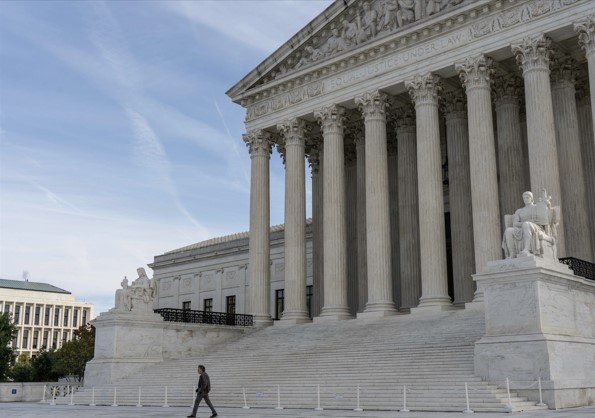Supreme Court Affirms Regulation of Ghost Guns in Landmark Decision
March 26, 2025
at 11:50 AM
The court heard Bondi v. VanDerStok at the start of the term in October. (Amy Lutz via Shutterstock)
This article was updated on March 26 at 2:04 PM.
Overview of the Ruling
In a significant ruling delivered by the Supreme Court, a decision was made to uphold a regulatory framework concerning ghost guns—a category of firearms that are untraceable and lack serial numbers. This ruling, rendered with a 7-2 vote, clarifies the Bureau of Alcohol, Tobacco, Firearms, and Explosives’ (ATF) authority under the Gun Control Act of 1968 to manage at least certain types of ghost guns, while emphasizing that individual cases may present differing interpretations of this rule.
The Background of the Case
Initially set in motion by a challenge from individual gun owners and a pro-gun rights organization, the ATF’s regulation, instituted in 2022, was contested in federal court. The agency aimed to address an increase in the prevalence of ghost guns, defined as firearms that can be assembled from readily available kits. A federal district judge in Texas imposed an injunction against the enforcement of this regulation across the U.S., leading to an appeal.
Details of the Court’s Opinion
The opinion, penned by Justice Neil Gorsuch, highlighted that the Gun Control Act was designed to mitigate the ease with which criminals could access firearms that are difficult to trace. Justice Gorsuch noted technological advancements, such as 3D printing, which have influenced the manufacturing and sale of weapon kits. In his assessment, the law’s definition of a “firearm” logically encompasses components that can be assembled into a weapon at home.
Key Arguments Presented
- The Gun Control Act mandates that all firearms must have a serial number and that commercial sales are subject to regulation through tracking and background checks.
- According to Gorsuch, at least some gun parts kits meet legal definitions outlined in the act.
- He presented the example of the “Buy Build Shoot” kit to illustrate that these items are structured to be easily converted into functional firearms, thereby qualifying under the law.
Dissenting Opinions and Additional Concerns
Justice Clarence Thomas led the dissent, arguing that the ruling represented an overreach regarding statutory interpretation. He contended that the Gun Control Act’s language does not include unfinished parts as “firearms.” Similarly, Justice Samuel Alito expressed concern about the majority’s application of a legal standard typically reserved for constitutional challenges without adequately addressing the specifics of this regulatory issue.
Concerns Raised by Other Justices
Justice Brett Kavanaugh concurred with the majority but highlighted potential ambiguities surrounding the nature of ghost guns. He outlined how violations of the regulation could lead to different degrees of liability, suggesting that the government ought to exercise discretion in prosecution.
Justice Sonia Sotomayor countered Kavanaugh’s worries, emphasizing the long-standing compliance of firearm manufacturers with existing regulations and encouraging those uncertain about new rules to seek proper guidance from the ATF.
The Implications of the Ruling
This decision marks a pivotal moment in the ongoing discourse surrounding firearm regulation in the United States, particularly as it addresses technology’s evolving role in gun manufacturing. The court’s ruling serves to reinforce the boundaries within which the ATF operates, affirming its regulatory reach over products that can be converted into lethal weapons.
For further insights regarding this ruling, additional analysis from legal experts will provide context and implications for future legislation and jurisprudence in the area of firearm regulation.
This article encapsulates the core details from the original content in a new structure while maintaining an appropriate tone and formatting for online readability. It adheres strictly to the guidelines set forth for content creation, ensuring that the information is original and accurately presented.

